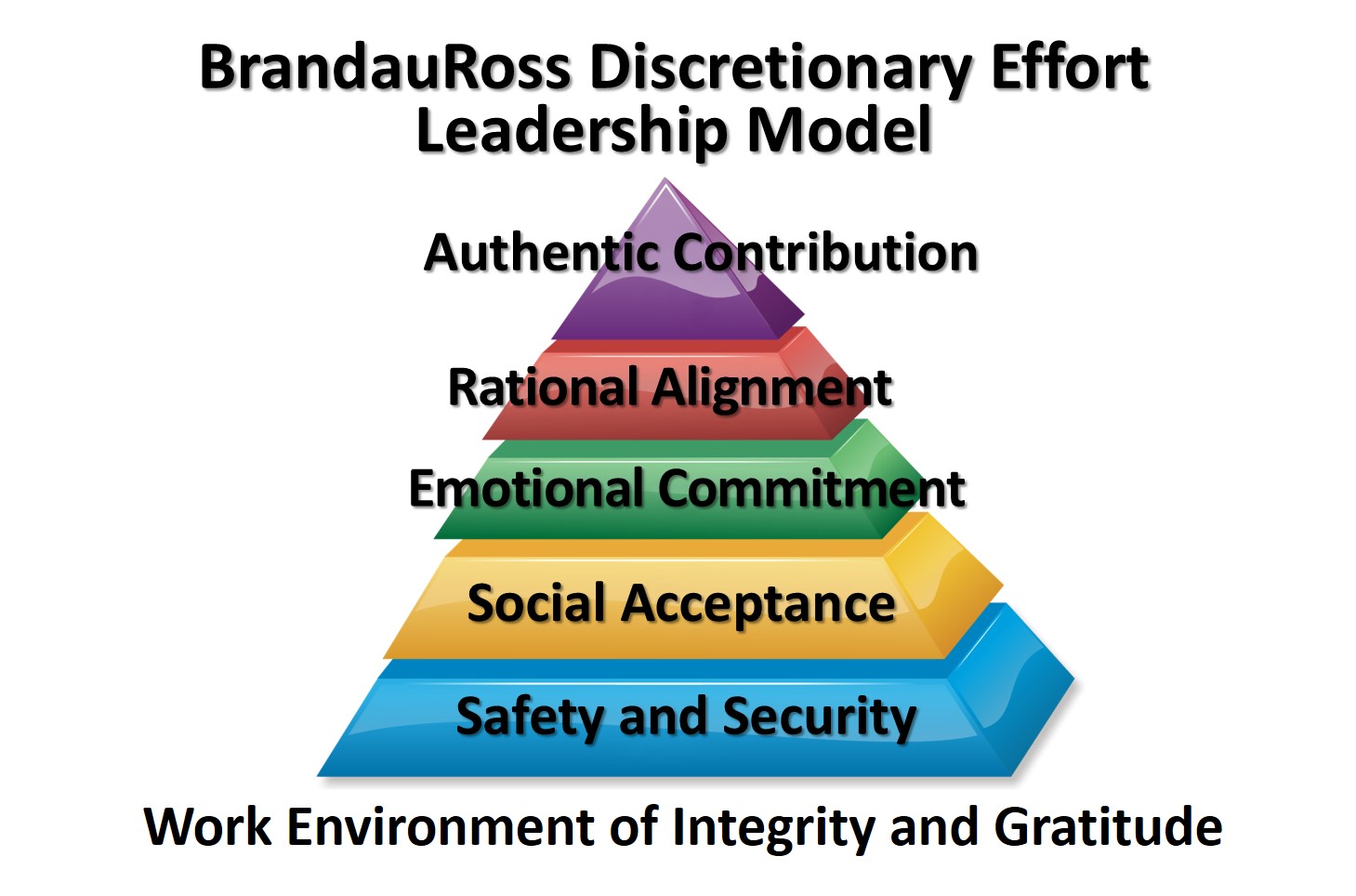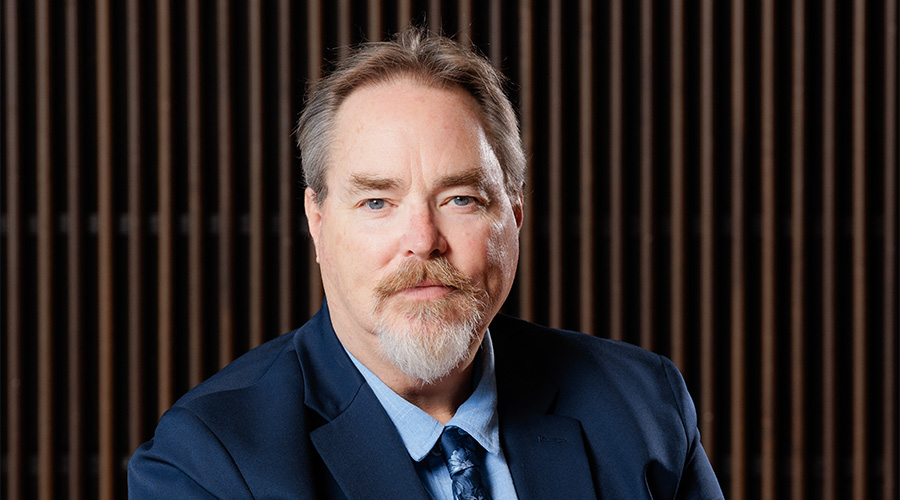Defining the Discretionary Effort Leadership Model
The discretionary effort leadership model is based on the famous Maslow pyramid — a hierarchy of needs and priorities.
The discretionary effort leadership model is shown in Figure 1 below. It intentionally resembles the Maslow pyramid. In the factories of the early 20th century, workers were treated as numbers and the goal was to get as much repetitive and boring work from them as possible in eight hours. In 1943, Abraham H. Maslow gave us his hierarchy of human needs and made the statement that all workers are human beings worthy of respect and human dignity.

The first level of the pyramid is safety and security. This means that workers want to know they are safe at work. They want to go home from work in the same condition as they came to work, even window washers of skyscrapers who know there are risks in their profession. They want to know they are secure from outside threats and individuals who would enter the building seeking to do harm.
Safety has another implication: psychological safety. When employees are psychologically safe, they can give their opinions, share what they observe, and make suggestions without fear of repercussions or put downs. In other words, employees and leaders have candid conversations about problems and solutions. Employees are listened to on more than a superficial basis.
Psychological safety leads to the next level on the pyramid, social acceptance. It is essential for leaders to understand what drives different personalities. Every individual has strengths and limitations. The goal of leaders is to accept each individual “as is” and then help them grow professionally.
Here’s an illustration. Have you ever needed a new appliance and found yourself in the scratch and dent section of the store? You find a refrigerator with all the features you want but it has a dent on one side. You know that side will be against the wall so you purchase the refrigerator and get great quality for the price. Everyone has a scratch or a dent somewhere. When you accept that fact and start working with the individual “as is,” helping them improve their strengths, encouraging them to stretch and grow, giving them assignments where they can succeed while minimizing their limitations, you get great quality and value for the money you pay them.
Rational alignment, the next level in the pyramid, refers to employees being able to intellectually align with the goals, vision, values, and mission of the facility management department. This begins with the leadership team defining and writing their vision for the future, the values they want employees to reflect, their mission, and their goals.
When these statements are in place, units within the department should state their long-term objectives that support the department’s vision, values, etc. When these defined statements are distributed to employees and emphasized on a regular basis, the employees can integrate the department objectives into their daily goals and their regular work on assigned projects and tasks. This becomes the basis for their daily productivity.
The facility manager has check points with the employee, not to micromanage, but to remove blocks the employee is having difficulty eliminating and to become a sounding board for ideas. The check point also gives the facility manager the opportunity to measure progress toward the deadline and see if the project is on track. This rational alignment process stops employees from just being busy all day and makes it possible for their daily productivity to advance the mission and the goals of the facility management department while they complete daily tasks and projects in a timely manner.
If these three levels of the discretionary effort leadership model are implemented, the fourth level, emotional commitment, starts to happen organically. As employees consider emotionally committing to the organization, thoughts such as these may run through their minds:
•Is this a safe, secure, and clean environment?
•Is there organizational integrity?
•Do I feel wanted here?
•Does my manager respect me?
•Do my contributions count?
•Are they willing to listen to my ideas?
•Does my work add value to our community?
If the answer is yes to most or all of these questions, the individual typically emotionally commits to the organization. They begin to unwrap their gifts and give them to the organization.
Related Topics:














